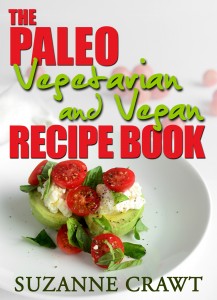 The paleo diet, also known as Stone Age Diet is Preservative free, Dairy free and Gluten free. These paleo diet is based on the foods eaten as during the Paleolithic period, an era that ended about 10,000 years ago prior to the discovery of fire. Cultivation of agricultural crops was unknown to man then. Legumes such as beans, and all grains are not consumed on the Paleo diet. The caveman’s menu consisted of healthy unprocessed real foods.
The paleo diet, also known as Stone Age Diet is Preservative free, Dairy free and Gluten free. These paleo diet is based on the foods eaten as during the Paleolithic period, an era that ended about 10,000 years ago prior to the discovery of fire. Cultivation of agricultural crops was unknown to man then. Legumes such as beans, and all grains are not consumed on the Paleo diet. The caveman’s menu consisted of healthy unprocessed real foods.
Whilst the paleo diet may sound restrictive, once you start the plan you’ll soon come up with unlimited and certainly won’t be bored eating this way.
Since there were no domesticated animals such as we have today, dairy products such as milk are also not part of the paleo diet. Your menu includes lean meat, fresh vegetables, fish, berries, nuts, poultry, seeds and fish. The omissions in paleo diet plan include grains, beans, peas, potatoes, salt, processed sugar and dairy. If you need to shake off some of your body mass and lose weight, then you simply need to ditch eating processed foods. You’ll soon see that the human digestive system was designed to process natural, unrefined foods – hence shifting to the paleo diet is likely to result in significant health benefits.
Whilst meat is a key part of the paleo diet, many vegetarians are also forging their own hybrid plan, which is why you’ll find numerous online.
The paleo diet has, in recent years, witnessed the exponential popularity especially among health and fitness enthusiasts. Programs focus mainly on avoiding grain products. Intake of whole foods is encouraged. You are bound to benefit immensely for as long as you stick to the program. Some of the immediate benefits would include increased energy, rapid weight loss, and enhanced thinking capabilities, as well as significant improvements in your sleep.
Those who practice the Paleo diet is trying to consume organic foods, wherever possible. The concept is based on the premise that the human body is a product of evolution hence has not fully adapted to foodstuff such as legumes, grains and dairy. The concept has since been expanded to encompass sleep and exercises.
To switch to the Paleo diet should not necessarily be done with haste, as it’s a way of life you’ll need to stick to, to achieve the full benefit. You can transition gradually as your body gets accustomed to the new Paleo diet. If you choose to switch with your entire family, just ensure that you have child friendly replacements ready to offer your children.
So what are you waiting for? Are you ready to give pale a go?



